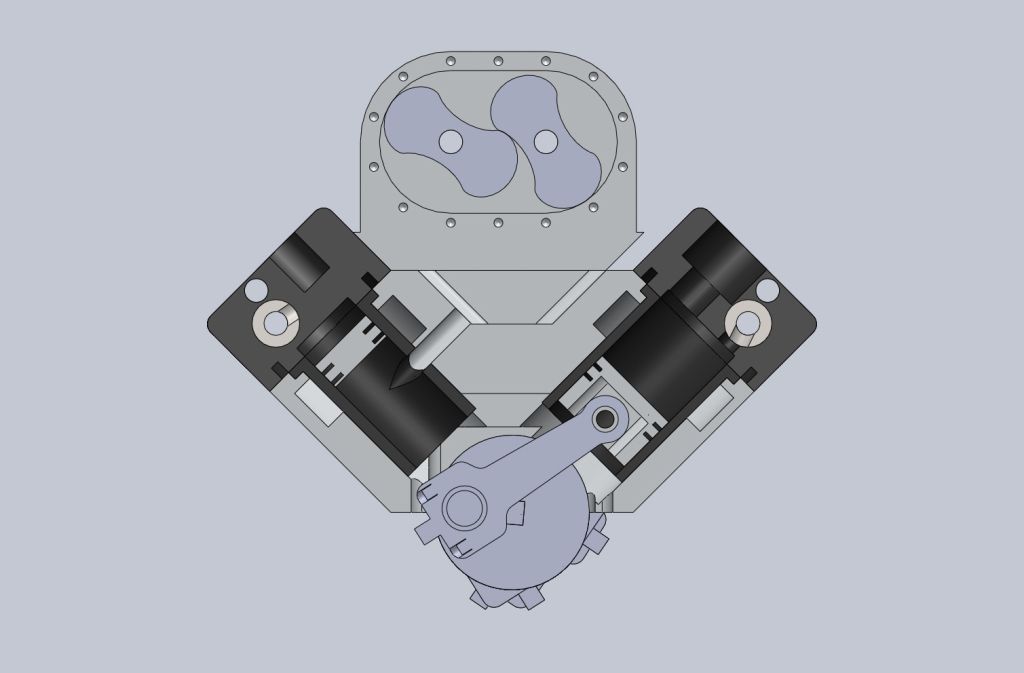i have an intake port. its at the bottom of the stroke. its .125 in diameter routed directly from the intake valley. a pressurized crank case is a side effect. when the piston is at tdc, the intake port is uncovered by the piston allowing air/fuel into the crank case. i cannot increase the length of my piston to keep the port closed off from the crank case without causing interference problems in the lower end. if i could make room in the head for two rotary valves i would have made it four stroke. space is a commodity.
i am pretty set in this design aspect of my engine and if I've come off as to blunt or rude I apologize. i just thought i had made my design understood.
No need for apologies, I do understand where you are coming from.
I'm not trying to deter you in any way, just trying to point out a few facts of life that's all. I would like to see your engine work as much as you do, but clearly you have a lot more learning to do.
Something else for you to consider, a Detroit diesel runs with a maximum redline around 2500 RPM, your engine will be lucky if it idles under 3000 RPM simply because of it's size and inherent losses in efficiency when compared to a full scale engine. That, by necessity, will demand different port timing to start with.
Air and Fuel DO NOT scale. That is you can make the engine way smaller than it is already, but the properties of fuel and air do not change simply because you have made a smaller engine.
To my knowledge, I have only seen one successful multi-cylinder, two stroke model engine and that was based on the top ends of several Cox .049 engines. Mind you, I haven't actually seen this engine run, so it's open to interpretation as to whether or not it actually works. It does work on paper though ... lol
I have the plans for it floating around here somewhere if you'd like to see them.
At present, what are your port timings? That is, at what degree of crankshaft rotation will the intake open and when will it close and what will the duration be, likewise for the exhaust?
I asked, because I think you will find that the intake port will need to be a little higher than I imagine it to be at present. I'm just guessing though.
When you map out the intake port timing for all 8 cylinders you will see why you will need to at least seal the crankcase between each pair of opposing pistons. Then your current plans have some chance of success.
You'll also have to make some reasonable pressure with the supercharger to compensate for the reduced crankcase pressure of each pair of cylinders.
Each opposing cylinder pair will be pretty much moving in the same direction, IE: as one side goes up, the other side will be coming down, so there will be little or no pumping/pressurising action going on to help force the fuel in the direction it needs to go in, they will simply be moving the air from side to side. The supercharger should overcome that though.













![DreamPlan Home Design and Landscaping Software Free for Windows [PC Download]](https://m.media-amazon.com/images/I/51kvZH2dVLL._SL500_.jpg)



































![MeshMagic 3D Free 3D Modeling Software [Download]](https://m.media-amazon.com/images/I/B1U+p8ewjGS._SL500_.png)













